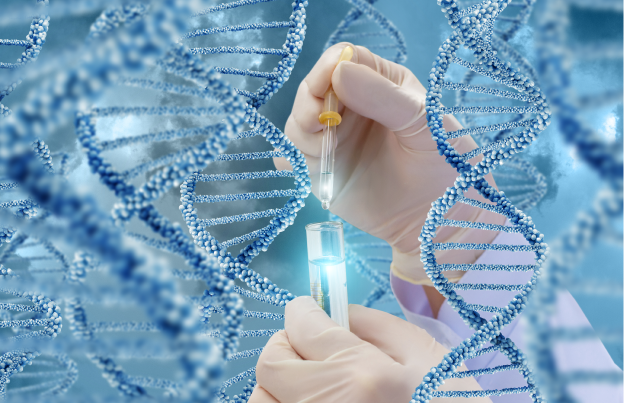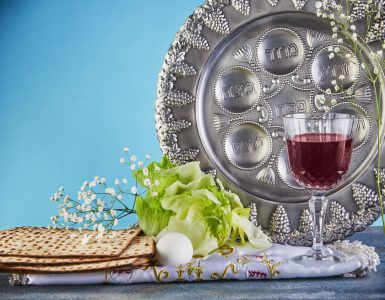Vayetzei 5781
And Yaakov then took fresh shoots of poplar and hazel and chestnut. He peeled white streaks in them, laying bare the white of the shoots. And he set up the rods which he had peeled, in the troughs, in the watering receptacles, to which the flocks came to drink – facing the flocks, so they would become stimulated when they came to drink. Then the flocks became stimulated by the rods and the flocks gave birth to streaked, speckled, and spotted ones… (Bereishis 30:37-39 & 43)
Many generations of Mefarshim have attempted to explain this peculiar passage. How did Yaakov’s placement of wooden rods of poplar, hazel, and chestnut impact the flocks when they came to drink? Why did this cause them to give birth to streaked, speckled, and spotted offspring? Although the simple reading is based on the thesis that hereditary traits are influenced by the environment, Professor Avraham Steinberg presents a fascinating alternative approach:
“White in sheep and black in goats are dominant, whereas colored patches in various locations are recessive characteristics. Thus, a white sheep or a black goat could be homozygotic, having both genes for white or black from both parents, or could be heterozygotic with only one color gene from one parent and the speckled gene from the other parent. The latter is not expressed because it is a recessive trait. Only if both parents give the sheep their speckled gene will the offspring be speckled.
Heterozygote males have more libido than homozygote males. Therefore, Yaakov selected the males with greater libido, who were the heterozygote males, rather than the sexually weaker heterozygote males. He allowed only the former to mate, thus producing speckled sheep, and thus became rich.”[1]
In recent years, gene therapy has emerged as a prominent and quickly developing field. Scientists have developed techniques to insert genes into patients’ cells or tissues, replacing mutated genes whose function is impaired. Gene therapy is a subtype of genetic engineering, in which genetic components of animals or plants are modified in order to improve virus resistance or to accelerate their rate of growth.
Genetic engineering is the topic of broad discussion of ethical considerations, which we will not examine on this occasion. In the following paragraphs, we will review several examples of the attitude of Halacha towards genetic engineering in both animals or plants and in human beings.
Genetic Engineering and Kilayim
Rav Shlomo Zalman Auerbach zt”l (Minchas Shlomo 2:100:7) was asked whether introducing cell particles from one species into another, thereby changing its properties, constituted Kilayim (hybridization between two species), which is forbidden by Torah law. Some argued that since cell particles are microscopic, this technique is permissible as the laws of the Torah only relate to elements that can be seen by the naked eye (which is the reason that consuming microscopic bugs is permissible). However, Rav Shlomo Zalman disagreed. He maintained that this principle does not apply to scientists who work directly and deliberately with these microscopic elements[2] and thus create the potential for Kilayim. It is only the layman who cannot perceive microscopic creatures who may disregard them.
Nevertheless, Rav Shlomo Zalman did agree that this technique is permitted. Regarding the Issur of Kilayim, the Pasuk states “Behemtecha” (your animal). This implies that Kilayim is the act of crossing two actual animals, not the introduction of microscopic elements of one into another. (This is not the case regarding Kilayim of plants where the Torah forbade any growth that stems from two separate species. Therefore, even injecting the juice of one species onto another is forbidden.)
Rav Shlomo Zalman also discusses a number of other Halachic questions regarding genetic modification. For example, if scientists develop a tomato that grows on a tree would its Bracha be Borei Pri haEitz? If they modify a previously non-Kosher species of fish so that it develops fins and scales, would it become Kosher?
Regarding the tomato, Rav Shlomo Zalman replied that indeed its Bracha would be Borei Pri haEitz as ultimately it grew from a tree. Regarding the fish, he notes that its status may depend upon whether the Torah’s Simanim (signs) of Kosher animals and fish act as a Siman (an indication that this is a Kosher species) or Sibah (the very cause of their permitted status).
If they are a Siman, genetic engineering would make no difference at all, as one cannot ignore the fact that this fish is known to be a non-Kosher species even if it has physical characteristics (that result from artificial manipulation of its genome) of a Kosher fish. However, if they are a Sibah, one could argue that the fish would indeed be transformed into a Kosher species since it now has the Simanim that cause it to be Kosher. On the other hand, perhaps the Torah only meant that natural Simanim act as a Sibah to permit a species, not artificial Simanim. Rav Shlomo Zalman ultimately concluded that the fish would not be Kosher.
Rav Shmuel Wosner zt”l (Shevet haLevi 7:121) also discuses the question of genetically modifying fish of a non-Kosher species so that they develop Simanim or vice versa. He concludes as did Rav Shlomo Zalman, but adds the following, important words of caution:
However, one should protest [this practice] so that there shouldn’t be a significant change in the works of creation… for it is forbidden to alter the form or features of Ma’asei Bereishis (the works of creation), for they were all created in a form that is appropriate for them. Though in Shevet haLevi (6:198) I did not agree to forbid aesthetic surgery for this reason – that was only because it does not constitute a fundamental change in Ma’asei Bereishis (though I did forbid it for other reasons). But in this, and any similar case where there is a change to its features, it is clear that it is against Hashem’s will…
In view of the Ramban’s comments in Chumash, [genetically modifying a fish] slightly resembles the Issur of cross breeding, (though the principles are different). In fact, the Chasam Sofer forbade crossing even non-fruit bearing trees. It is unlike crossing a species with a different form of the same species as doing so does not instigate a significant change in Ma’asei Bereishis as the two species are essentially the same and after crossing them their basic properties remain as Hashem wished. But in this case there is a significant change. (My comparison to the Issur of cross breeding is merely for illustrative purposes).
It is a Mitzva to prevent the experts from occupying themselves with altering Ma’asei Bereishis. I apply to them the Pasuk, “Hashem created a man straight, but they seek many complications”.
Rav Wosner bases his ruling on several sources which indicate that the Torah opposes any alterations to Ma’asei Bereishis.
Firstly, he cites the Gemara in Chulin (7b) which asserts that the reason that witchcraft is called Keshafim is because it is “Makchish Pamalya Shel Ma’ala” – it “contradicts the entourage of Heaven”. The Chasam Sofer explains that this is because witchcraft alters Hashem’s creations.
Secondly, he references the Issur of Kilayim. Several of the Rishonim such as the Ibn Ezra (Vayikra 19:19) explain that the reason for this Issur is that a person may not alter Ma’asei Bereishis. The Ramban (ibid.) elaborates:
The underlying rationale for the prohibition of Kilayim is that Hashem created unique species of all living creatures in the world, both plants and animate creatures. He gave them each the capacity for reproduction so that each species would endure indefinitely for as long as He wishes the world to exist. He instructed that they produce offspring of their own species so that the species will never change [into something else], as the Pasuk states, “according to its species” (Bereishis 1). The purpose of breeding, by which we mate animals with each other, is to propagate the species, just as men cohabitate with women for the purposes of procreation.
Somebody who crosses two species alters and contradicts Ma’asei Bereishis acts as if he believes that Hashem did not sufficiently perfect the world and that he wants to assist in the world’s creation by adding new creatures. Different species in the animal kingdom are unable to reproduce through interbreeding. Even similar animals that can procreate one with the other – for example, mules [which are a cross between a horse and donkey] – their offspring will eventually die out, as they are sterile.
For these two reasons, the act of cross breeding is something repulsive and futile.
Genetic Engineering in Humans
The Nishmas Avraham (4, p183) cites Rav Shlomo Zalman Auerbach zt”l who ruled that it is permitted (and indeed praiseworthy) to conduct gene therapy in order to treat hereditary diseases. Since the therapy treats impaired genes and its purpose is to cure or prevent disease, it is no different than any other act of Refua and therefore permissible. Rav Wosner’s concerns about altering Ma’asei Bereishis are not applicable, as gene therapy is not intended to improve or alter the human race but solely to return man to the healthy state in which Hashem originally created the human being. Though Hashem certainly intended that an individual suffer with a hereditary disease, curing him is not considered to be an act of meddling in Ma’asei Bereishis, just like any other act of Refua.
[1] Encyclopedia of Jewish Medical Ethics (2003), p 441.
[2] Rav Shlomo Zalman invokes this argument in several places.















Add comment